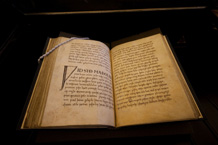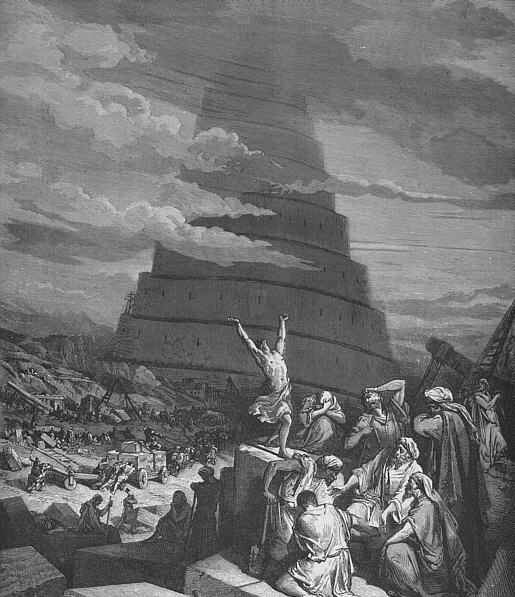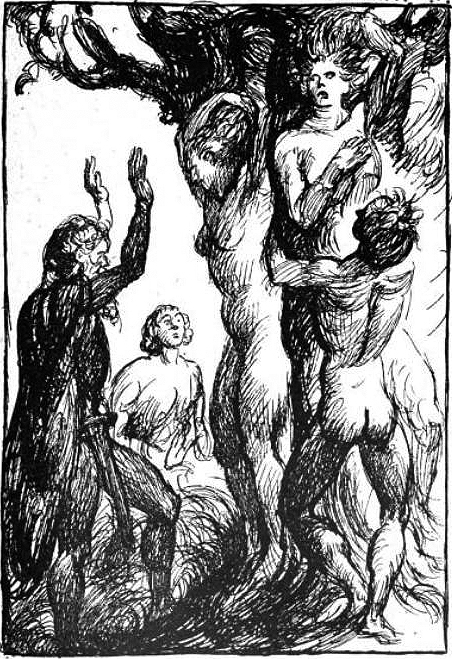|
Vili And Vé
In Norse mythology, Vili ( ; Old Norse: ) and Vé ( ; O.N.: ) are the brothers of the god Odin (from Old Norse ''Óðinn''), sons of Bestla, daughter of Bölþorn; and Borr, son of Búri Name The Old Norse theonym ''Vé'' (or ''Véi'') is cognate with Gothic ''weiha'' ('priest'), both stemming from Proto-Germanic *''wīhōn'', itself from the adjective *''wīhaz'', meaning 'holy' (cf. Goth. ''weihs'', Old High German ''wīh'')''.'' A related noun, *''wīhan'' ('sanctuary'), can also be reconstructed on the basis of Old Norse ''vé'' ('sanctuary'), Old English ''wēoh'' ('idol'), and Old Saxon ''wīh'' ('temple').' ''Vili'' transparently means 'will' in Old Norse. It stems from the Proto-Germanic noun *''weljōn'' ~ *''weljan'' ('will, wish'; cf. Gothic ''wilja'', Old English ''willa'', and Old High German ''willo''). Attestations In Proto-Norse, the three brothers' names were alliterating, *'' Wōdinaz, Wiljô, Wīhaz''), so that they can be taken as forming a triad of ... [...More Info...] [...Related Items...] OR: [Wikipedia] [Google] [Baidu] |
Norse Gods
Norse is a demonym for Norsemen, a medieval North Germanic ethnolinguistic group ancestral to modern Scandinavians, defined as speakers of Old Norse from about the 9th to the 13th centuries. Norse may also refer to: Culture and religion * Norse mythology * Norse paganism * Norse art * Norse activity in the British Isles * Vikings Language * Proto-Norse language, the Germanic language predecessor of Old Norse * Old Norse, a North Germanic language spoken in Scandinavia and areas under Scandinavian influence from c. 800 AD to c. 1300 AD ** Old West Norse, the western dialect of Old Norse, spoken in Norway and areas under Norwegian influence *** Greenlandic Norse *** Norn language, an extinct North Germanic language that was spoken in Shetland and Orkney, off the north coast of mainland Scotland, and in Caithness ** Old East Norse, the eastern dialect of Old Norse, spoken in Denmark, Sweden and areas under their influence Location * Norse, Texas, a ghost town founded by N ... [...More Info...] [...Related Items...] OR: [Wikipedia] [Google] [Baidu] |
Thor
Thor (; from non, Þórr ) is a prominent god in Germanic paganism. In Norse mythology, he is a hammer-wielding god associated with lightning, thunder, storms, sacred groves and trees, strength, the protection of humankind, hallowing, and fertility. Besides Old Norse , the deity occurs in Old English as , in Old Frisian as ', in Old Saxon as ', and in Old High German as , all ultimately stemming from the Proto-Germanic theonym , meaning 'Thunder'. Thor is a prominently mentioned god throughout the recorded history of the Germanic peoples, from the Roman occupation of regions of , to the Germanic expansions of the Migration Period, to his high popularity during the Viking Age, when, in the face of the process of the Christianization of Scandinavia, emblems of his hammer, , were worn and Norse pagan personal names containing the name of the god bear witness to his popularity. Due to the nature of the Germanic corpus, narratives featuring Thor are only atte ... [...More Info...] [...Related Items...] OR: [Wikipedia] [Google] [Baidu] |
Toponymy
Toponymy, toponymics, or toponomastics is the study of '' toponyms'' ( proper names of places, also known as place names and geographic names), including their origins, meanings, usage and types. Toponym is the general term for a proper name of any geographical feature, and full scope of the term also includes proper names of all cosmographical features. In a more specific sense, the term ''toponymy'' refers to an inventory of toponyms, while the discipline researching such names is referred to as ''toponymics'' or ''toponomastics''. Toponymy is a branch of onomastics, the study of proper names of all kinds. A person who studies toponymy is called ''toponymist''. Etymology The term toponymy come from grc, τόπος / , 'place', and / , 'name'. The ''Oxford English Dictionary'' records ''toponymy'' (meaning "place name") first appearing in English in 1876. Since then, ''toponym'' has come to replace the term ''place-name'' in professional discourse among geographers. Topo ... [...More Info...] [...Related Items...] OR: [Wikipedia] [Google] [Baidu] |
Exeter Book
The Exeter Book, also known as the Codex Exoniensis or Exeter Cathedral Library MS 3501, is a large codex of Old English poetry, believed to have been produced in the late tenth century AD. It is one of the four major manuscripts of Old English poetry, along with the Vercelli Book in Vercelli, Italy, the Nowell Codex in the British Library, and the Junius manuscript in the Bodleian Library in Oxford. The book was donated to what is now the Exeter Cathedral library by Leofric, the first bishop of Exeter, in 1072. It is believed originally to have contained 130 or 131 leaves, of which the first 7 or 8 have been replaced with other leaves; the original first 8 leaves are lost. The Exeter Book is the largest and perhaps oldest known manuscript of Old English literature, containing about a sixth of the Old English poetry that has come down to us. In 2016, UNESCO recognized the book as "the foundation volume of English literature, one of the world's principal cultural arte ... [...More Info...] [...Related Items...] OR: [Wikipedia] [Google] [Baidu] |
Mythical Origins Of Language
There have been many accounts of the origin of language in the world's mythologies and other stories pertaining to the origin of language, the development of language and the reasons behind the diversity in languages today. These myths have similarities, recurring themes, and differences, having been passed down through oral tradition. Some myths go further than just storytelling and are religious, with some even having a literal interpretation even today. Recurring themes in the myths of language dispersal are floods and catastrophes. Many stories tell of a great deluge or flood which caused the peoples of the Earth to scatter over the face of the planet. Punishment by a god or gods for perceived wrongdoing on the part of man is another recurring theme. Myths regarding the origins of language and languages are generally subsumed or footnoted into larger creation myths, although there are differences. Some tales say a creator endowed language from the beginning, others count la ... [...More Info...] [...Related Items...] OR: [Wikipedia] [Google] [Baidu] |
Ask And Embla
In Norse mythology, Ask and Embla ( non, Askr ok Embla )—male and female respectively—were the first two humans, created by the gods. The pair are attested in both the '' Poetic Edda'', compiled in the 13th century from earlier traditional sources, and the '' Prose Edda'', written in the 13th century by Snorri Sturluson. In both sources, three gods, one of whom is Odin, find Ask and Embla and bestow upon them various corporeal and spiritual gifts. A number of theories have been proposed to explain the two figures, and there are occasional references to them in popular culture. Etymology Old Norse literally means "ash tree" but the etymology of ''embla'' is uncertain, and two possibilities of the meaning of ''embla'' are generally proposed. The first meaning, " elm tree", is problematic, and is reached by deriving ''*Elm-la'' from ''*Almilōn'' and subsequently to ("elm").Simek (2007:74). The second suggestion is " vine", which is reached through ''*Ambilō'', which may ... [...More Info...] [...Related Items...] OR: [Wikipedia] [Google] [Baidu] |
Æsir
The Æsir (Old Norse: ) are the gods of the principal pantheon in Norse religion. They include Odin, Frigg, Höðr, Thor, and Baldr. The second Norse pantheon is the Vanir. In Norse mythology, the two pantheons wage war against each other, resulting in a unified pantheon. Unlike the Old English word ''god'' (and the Old Norse word '), Æsir was never converted over to Christian use. Etymology ''Æsir'' is the plural of '' áss'', ''ǫ́ss'' "god". In genitival compounds, it takes the form ', e.g. in ' ("Thor of the Æsir"), besides ' found in : '' ás-brú'' "gods' bridge" (the rainbow), : ' "gods' enclosure", : ' "gods' kin", : ' "gods' leader", : ' "gods' might" (especially of Thor), : ' "divine wrath" etc. : ' "national god" (') is a title of Thor, as is : ' "almighty god", while it is Odin who is "the" '. There is also Old East Norse dialectal : *''ās-ækia'' (OWN: *''áss-ekja''), i.e. "god ride" (Thor riding in his wagon), resulting in the modern Swedish word ... [...More Info...] [...Related Items...] OR: [Wikipedia] [Google] [Baidu] |
Ymir
In Norse mythology, Ymir (, ), also called Aurgelmir, Brimir, or Bláinn, is the ancestor of all jötnar. Ymir is attested in the '' Poetic Edda'', compiled in the 13th century from earlier traditional material, in the '' Prose Edda'', written by Snorri Sturluson in the 13th century, and in the poetry of skalds. Taken together, several stanzas from four poems collected in the ''Poetic Edda'' refer to Ymir as a primeval being who was born from Eitr, yeasty venom that dripped from the icy rivers called the Élivágar, and lived in the grassless void of Ginnungagap. Ymir gave birth to a male and female from his armpits, and his legs together begat a six-headed being. The grandsons of Búri, the gods Odin, Vili and Vé, fashioned the Earth (elsewhere personified as a goddess, Jörð) from his flesh, from his blood the ocean, from his bones the mountains, from his hair the trees, from his brains the clouds, from his skull the heavens, and from his eyebrows the middle rea ... [...More Info...] [...Related Items...] OR: [Wikipedia] [Google] [Baidu] |
Numen
Numen (plural numina) is a Latin term for " divinity", "divine presence", or "divine will." The Latin authors defined it as follows:For a more extensive account, refer to Cicero writes of a "divine mind" (''divina mens''), a god "whose numen everything obeys," and a "divine power" (''vis divina'') "which pervades the lives of men." It causes the motions and cries of birds during augury. In Virgil's recounting of the blinding of the one-eyed giant, Polyphemus, from the Odyssey, in his Aeneid, he has Odysseus and his men first "ask for the assistance of the great numina" (''magna precati numina''). Reviewing public opinion of Augustus on the day of his funeral, the historian Tacitus reports that some thought "no honor was left to the gods" when he "established the cult of himself" (''se ... coli vellet'') "with temples and the effigies of numina" (''effigie numinum''). Pliny the younger in a letter to Paternus raves about the "power," the "dignity," and "the majesty;" in short, the ... [...More Info...] [...Related Items...] OR: [Wikipedia] [Google] [Baidu] |
Cognition
Cognition refers to "the mental action or process of acquiring knowledge and understanding through thought, experience, and the senses". It encompasses all aspects of intellectual functions and processes such as: perception, attention, thought, intelligence, the formation of knowledge, memory and working memory, judgment and evaluation, reasoning and computation, problem solving and decision making, comprehension and production of language. Imagination is also a cognitive process, it is considered as such because it involves thinking about possibilities. Cognitive processes use existing knowledge and discover new knowledge. Cognitive processes are analyzed from different perspectives within different contexts, notably in the fields of linguistics, musicology, anesthesia, neuroscience, psychiatry, psychology, education, philosophy, anthropology, biology, systemics, logic, and computer science. These and other approaches to the analysis of cognition (such as embodie ... [...More Info...] [...Related Items...] OR: [Wikipedia] [Google] [Baidu] |






